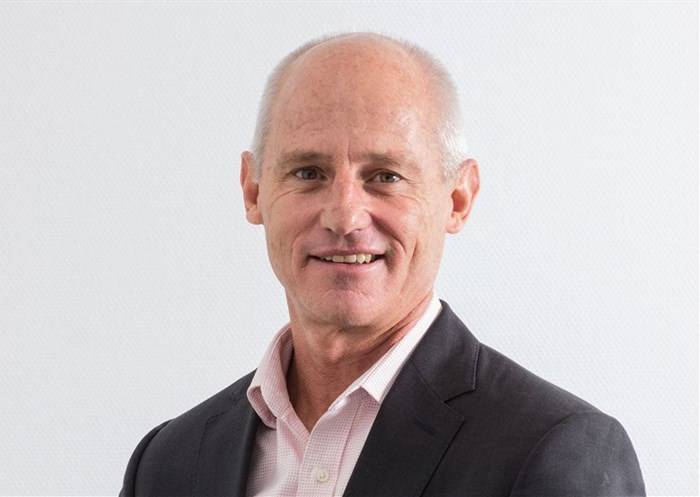Small and medium-sized businesses (SMEs) are the backbone of economic development in emerging markets like India, South Africa, Kenya and Colombia, where these enterprises contribute up to 40% of national GDP. Recent years have seen the SME sector in these nations develop at different speeds, with countries like Brazil joining economic powerhouses like the UK and America in topping the list of countries with the largest new business growth. In these inspiring examples are key learning opportunities for South African small businesses.
This is the opinion of Mark Paper, chief operation officer: business partners international at Business Partners Limited, who points to the growth strategies of countries like India, Mexico and Brazil as case studies for how the South African SME sector can expand; despite several unique hurdles that face the country’s entrepreneurs.
A three-pronged approach to sector development
Paper points to the success of India’s IT industry as an example of how strategic positioning and long-term planning can reap huge dividends for the country and its people.
During the early 1990s, India experienced a ‘brain drain’ in its fledgling IT industry, with local talent emigrating to other markets. This loss of key talent served as a prompt for key decision-makers to boost investment into building new capacities.
For India, an intervention at school-level education was identified as a possible solution. The government therefore poured resources into encouraging young children to pursue careers in IT and technology-related fields. Today, India is a global technology hub, producing between 600,000 and 800,000 tertiary IT graduates per year, according to Bombay-listed software and services giant, Zensar Technologies.
For Paper, India’s success in this arena cannot be attributed to the state acting alone, but rather, to the collaborative efforts of multiple stakeholders in civil society, education, training and development, career development and the corporate realm.
As he argues, true impact requires the cooperation and collaboration of “the golden tripartite: the public sector, the private sector and the South African public. Our country is well positioned to follow India’s lead, albeit in the broader context of STEM (science, technology, engineering and mathematics), but more investment needs to flow in from multiple directions.
State-led interventions to encourage education-driven initiatives are important, but we need the private sector to employ these graduates at scale. This needs to have the backing of civil society, which plays a crucial role as the parents and caregivers of young talent in promoting STEM education and equipping young people with the tools they need to succeed in these areas,” says Paper.
Policies need to be targeted at achieving specific, measurable goals
One of the cornerstones of Brazil’s success as a country with a thriving SME sector, is the measurability of its policies. According to a report published by leading South African researcher and journalist, Stephen Timm, in recent years, Brazil’s planning ministry honed their focus in on fostering a more enabling environment for entrepreneurship.
These efforts were backed by strong policy reforms such as mandated, governmental ‘set-asides’ or large portions of the state’s procurement bill that are allocated for small firms. Under articles 42 to 49 of Lei Geral, all governmental tenders of up to US $80,000 (about R260,000) in value must be granted to SMEs.
However, the process of these policy changes and their implementation is measured closely. Policymakers are held to account according to measurable targets on the number of loans offered to SMEs on an annual basis, the number of small businesses registered as taxpayers and supported in fulfilling their obligations and the number of SMEs supporting key industries such as export and manufacturing.
This approach is conducive to creating an environment in which policymakers can be held to account for the implementation of their policies – one in which “we do what we say we are going to do, and we remain open to exploring what we can do better,” says Paper.
Leveraging financial technology as part of a broader purpose
One cannot talk about strengthening the local SME sector without touching on solutions to its greatest challenge. Research conducted by Business Partners Limited for its quarterly SME Confidence Index has shown over a number of years, that access to finance is one of the biggest and most prevalent hurdles to success in South Africa.
Mexico provides a key learning opportunity of how non-bank financial institutions and fintech startups can work together to fill this gap and provide SMEs with greater access to funding. Mexican financial leasing firm and direct SME lender, Mega is leading the charge in the financial sector by offering finance to the ‘unbanked’ and under-served constituent of SMEs who are not regarded as being part of the formal sector.
In the example of Mega and its non-bank counterparts in Mexico, Paper finds another invaluable lesson for South Africans. “Our local entrepreneurship base is alive with talent and our entrepreneurs are hungry for innovation. In fintech, we find a viable solution to how we can leapfrog other emerging markets and harness our drive to succeed by advocating for greater financial inclusion.
Providing more non-traditional financing solutions for SMMEs (small, micro and medium enterprises), particularly on a micro scale should not be seen as a goal in isolation. Rather, fintech innovators should frame their efforts within the broader imperative of sustainability – a crucial part of which involves social justice and equality. “This is what investors, corporate decision-makers and the government want to see more of,” says Paper.
“As we continue with the year ahead, looking for solutions for promoting economic growth and better supporting SMEs in South Africa, lessons from other emerging markets provide a good start,” concludes Paper.


































